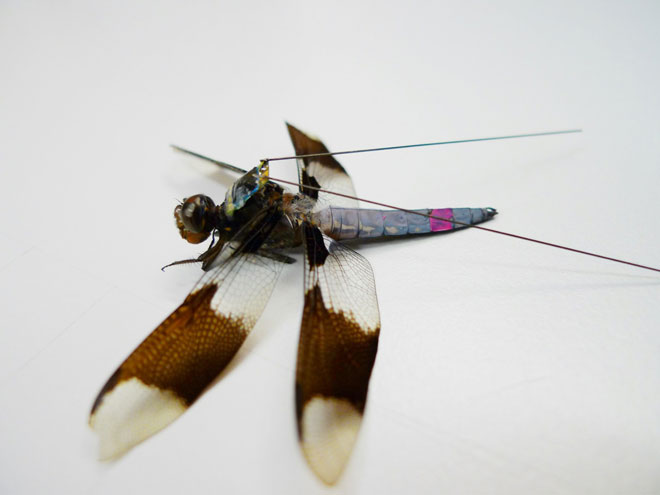Anthony Leonardo is a neuroscientist at Howard Hughes Medical Institute’s research facility who has created an environment to track dragonflies’ neuron transmissions. This research will enable him to apply this knowledge to understanding the human brain’s functions, and how it can be susceptible to degenerative diseases.
Leonardo selected dragonflies for his experiment because they are simplistic creatures that have fewer brain neurons. With less neurons, it is easier to track what’s happening inside of the brain of the dragonfly. This experimentation with dragonflies is an example of how scientists can observe creatures with smaller numbers of neurons, to grasp a firmer understanding of the human brain.
Each dragonfly is equipped with a backpack that records the insect’s nerve cells when hunting fruit flies. While completing this task, the dragonfly tracks the fly’s path and plans the easiest way to snatch it up and eat it. Leonardo records the insects’ movements with the external cameras installed to videotape the scene unfolding.

Image via Anthony Leonardo
The backpacks are created by gluing a silver wire and carbon fiber together, making an antenna, cutting out a custom-made chip, and attaching all of the pieces. Lastly, the apparatus is glued onto the dragonfly’s back. The 40-milligram backpack is as heavy as a grain of rice, so to not weigh down the dragonfly when flying.
There is a tiny wire on the backpack that leads to probes which hook into the dragonfly’s individual neurons that function like a human’s spinal cord. While the dragonfly flies around, the backpack wirelessly broadcasts electrical signals from the insect’s neurons and brain to a computer that Leonardo analyzes. Leonardo is applying this knowledge to his study of the human brain and its functions. In a statement, Leonardo said that the probes “gather input from visual parts of the brain and send axons down to the motor neurons that move the wings.”
The dragonflies are then released into a habitat of fruit flies, where Leonardo observes how dragonflies think and behave as they hunt. The high-speed infrared video cameras tape how the dragonflies attack the fruit flies, and can be re-watched in slow motion. He is currently working on how motion capture can be created for dragonfly use, just like they were being captured for an animated film. Leonardo’s team sticks tiny reflective electrodes on each dragonfly to observe each bodily movement of the dragonfly as it bends and flies. How the dragonfly’s body works determines each individual movement.

Image of dragonflies' habitat via Anthony Leonardo
Leonardo was inspired by the technology found in RFIC key card access security systems used in office buildings. When entering an office with RFIC capabilities, the reader emits radio waves and creates a magnetic field. When the card is placed next to the reader, the magnetic field releases a current that powers a chip inside the card. A code is then transmitted to unlock the door. This form of technology is seen in the way that the dragonfly’s backpack creates radio waves to power the chip. Here, there is no need for an external battery pack on the device.
If these experiments extend to a great success rate, analyzing dragonflies’ neurons can show how the human brain functions. Advanced research could showcase how degenerative diseases like Parkinson’s and Alzheimer’s occur, and how they can be prevented.
Story via News.nationalgeographic.com
Advertisement
Learn more about Electronic Products Magazine





